Effect of Double-Quenching on the Hardness and Toughness of a Wear-Resistant Steel
Abstract
1. Introduction
2. Materials and Methods
3. Results
3.1. Mechanical Properties
3.2. Microstructure Characterization
4. Discussion
4.1. Effective Grain Boundaries for DBTT
4.2. Effective Grain Boundaries for Hardness
5. Conclusions
Author Contributions
Funding
Data Availability Statement
Acknowledgments
Conflicts of Interest
References
- Wen, E.; Song, R.; Xiong, W. Effect of tempering temperature on microstructures and wear behavior of a 500 HB grade wear-resistant steel. Metals 2019, 9, 45. [Google Scholar] [CrossRef]
- Cao, Y.; Wang, Z.; Kang, J.; Wu, D.; Wang, G. Effects of tempering temperature and Mo/Ni on microstructures and properties of lath martensitic wear-resistant steels. J. Iron Steel Res. Int. 2013, 20, 70–75. [Google Scholar] [CrossRef]
- Fu, H.; Xiao, Q.; Fu, H. Heat treatment of multi-element low alloy wear-resistant steel. Mater. Sci. Eng. A 2005, 396, 206–212. [Google Scholar] [CrossRef]
- Haiko, O.; Javaheri, V.; Valtonen, K.; Kaijalainen, A.; Hannula, J.; Kömi, J. Effect of prior austenite grain size on the abrasive wear resistance of ultra-high strength martensitic steels. Wear 2020, 454, 203336. [Google Scholar] [CrossRef]
- Furuhara, T.; Kikumoto, K.; Saito, H.; Sekine, T.; Ogawa, T.; Morito, S.; Maki, T. Phase transformation from fine-grained austenite. ISIJ Int. 2008, 48, 1038–1045. [Google Scholar] [CrossRef]
- Kamada, Y.; Ohnishi, K.; Bessyo, K. Effect of double-quench processing on toughness of heavy-gauge ultrahigh strength steel plate. J. Mater. Sci. Lett. 1991, 10, 598–601. [Google Scholar] [CrossRef]
- Lee, K.; Hong, S.; Kang, Y.; Yoon, H.; Kang, S. Grain refinement in bearing steels using a double-quenching heat-treatment process. Int. J. Automot. Technol. 2009, 10, 697–702. [Google Scholar] [CrossRef]
- Wang, C.; Wang, M.; Shi, J.; Hui, W.; Dong, H. Effect of microstructural refinement on the toughness of low carbon martensitic steel. Scripta Mater. 2008, 58, 492–495. [Google Scholar] [CrossRef]
- Sanij, M.K.; Banadkouki, S.G.; Mashreghi, A.; Moshrefifar, M. The effect of single and double quenching and tempering heat treatments on the microstructure and mechanical properties of AISI 4140 steel. Mater. Des. 2012, 42, 339–346. [Google Scholar] [CrossRef]
- Cao, Z.; Shi, Z.; Yu, F.; Sugimoto, K.-i.; Cao, W.; Weng, Y. Effects of double quenching on fatigue properties of high carbon bearing steel with extra-high purity. Int. J. Fatigue 2019, 128, 105176. [Google Scholar] [CrossRef]
- Morito, S.; Tanaka, H.; Konishi, R.; Furuhara, T.; Maki, T. The morphology and crystallography of lath martensite in Fe-C alloys. Acta Mater. 2003, 51, 1789–1799. [Google Scholar] [CrossRef]
- Liu, D.; Luo, M.; Cheng, B.; Cao, R.; Chen, J. Microstructural evolution and ductile-to-brittle transition in a low-carbon MnCrMoNiCu heavy plate steel. Metall. Mater. Trans. A 2018, 49, 4918–4936. [Google Scholar] [CrossRef]
- Li, X.; Zhao, J.; Cong, J.; Misra, R.; Wang, X.; Wang, X.; Shang, C. Machine learning guided automatic recognition of crystal boundaries in bainitic/martensitic alloy and relationship between boundary types and ductile-to-brittle transition behavior. J. Mater. Sci. Technol. 2021, 84, 49–58. [Google Scholar] [CrossRef]
- Zhang, C.; Wang, Q.; Ren, J.; Li, R.; Wang, M.; Zhang, F.; Sun, K. Effect of martensitic morphology on mechanical properties of an as-quenched and tempered 25CrMo48V steel. Mater. Sci. Eng. A 2012, 534, 339–346. [Google Scholar] [CrossRef]
- Morris Jr, J.W. Comments on the microstructure and properties of ultrafine grained steel. ISIJ Int. 2008, 48, 1063–1070. [Google Scholar] [CrossRef]
- Morito, S.; Yoshida, H.; Maki, T.; Huang, X. Effect of block size on the strength of lath martensite in low carbon steels. Mater. Sci. Eng. A 2006, 438, 237–240. [Google Scholar] [CrossRef]
- Wang, J.; Hong, H.; Huang, A.; Yang, X.; Qian, R.; Shang, C. New insight into the relationship between grain boundaries and hardness in bainitic/martensitic steels from the crystallographic perspective. Mater. Lett. 2022, 308, 131105. [Google Scholar] [CrossRef]
- Guo, Z.; Lee, C.; Morris Jr, J. On coherent transformations in steel. Acta Mater. 2004, 52, 5511–5518. [Google Scholar] [CrossRef]
- Zhao, J.; Li, X.; Wang, X.; Liu, S.; Wang, X.; Shang, C. Distribution feature of specific misorientation angle in a bainitic steel. Mater. Charact. 2021, 172, 110874. [Google Scholar] [CrossRef]
- Li, X.; Zhao, J.; Wang, J.; Wang, X.; Liu, S.; Shang, C. Effect of boundaries on toughness in high-strength low-alloy steels from the view of crystallographic misorientation. Mater. Lett. 2020, 259, 126841. [Google Scholar] [CrossRef]
- Song, H.; Li, C.; Lan, L.; Zhao, D.; Wang, G. Impact toughness of an NM400 wear-resistant steel. J. Iron Steel Res. Int. 2013, 20, 72–77. [Google Scholar] [CrossRef]
- Huang, S.; Yu, Y.; Wang, Z.; Su, S.; Chen, K.; Yuan, S.; Xie, Z.; Shang, C. Crystallographic insights into the role of nickel on hardenability of wear-resistant steels. Mater. Lett. 2022, 306, 130961. [Google Scholar] [CrossRef]
- Yuan, S.; Xie, Z.; Wang, J.; Zhu, L.; Yan, L.; Shang, C.; Misra, R. Effect of heterogeneous microstructure on refining austenite grain size in low alloy heavy-gage plate. Metals 2020, 10, 132. [Google Scholar] [CrossRef]
- Li, X.; Lu, G.; Wang, Q.; Zhao, J.; Xie, Z.; Misra, R.D.K.; Shang, C. The Effects of Prior Austenite Grain Refinement on Strength and Toughness of High-Strength Low-Alloy Steel. Metals 2021, 12, 28. [Google Scholar] [CrossRef]
- Wang, X.; Wang, Z.; Ma, X.; Subramanian, S.; Xie, Z.; Shang, C.; Li, X. Analysis of impact toughness scatter in simulated coarse-grained HAZ of E550 grade offshore engineering steel from the aspect of crystallographic structure. Mater. Charact. 2018, 140, 312–319. [Google Scholar] [CrossRef]
- Hugosson, H.W.; Jansson, U.; Johansson, B.; Eriksson, O. Restricting dislocation movement in transition metal carbides by phase stability tuning. Science 2001, 293, 2434–2437. [Google Scholar] [CrossRef]
- Weaver, J.S.; Li, N.; Mara, N.A.; Jones, D.R.; Cho, H.; Bronkhorst, C.A.; Fensin, S.J.; Gray III, G.T. Slip transmission of high angle grain boundaries in body-centered cubic metals: Micropillar compression of pure Ta single and bi-crystals. Acta Mater. 2018, 156, 356–368. [Google Scholar] [CrossRef]
- Wang, Z.; Guo, Z.; Shang, C.; Chen, B.; Hui, Y. Characterization of the Stretch Flangeabitity of High-Strength Bainitic Steel: The Significance of Variant Pairs. Materials 2021, 15, 276. [Google Scholar] [CrossRef]
- Wang, Z. Study on the Correlation between Crystallography and Mechanical Properties of High Strength Steels. Ph.D. Thesis, University of Science and Technology Beijing, Beijing, China, 2022. [Google Scholar]
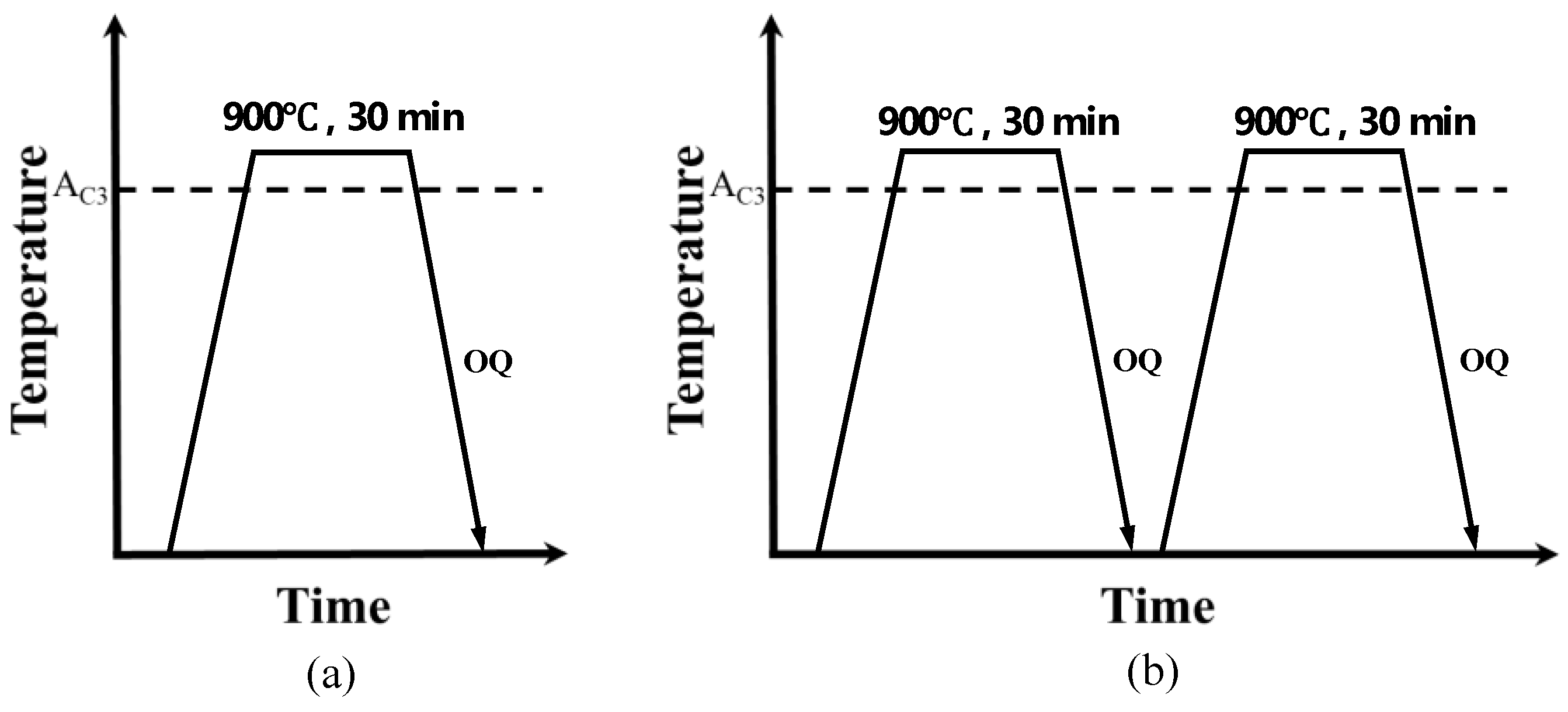
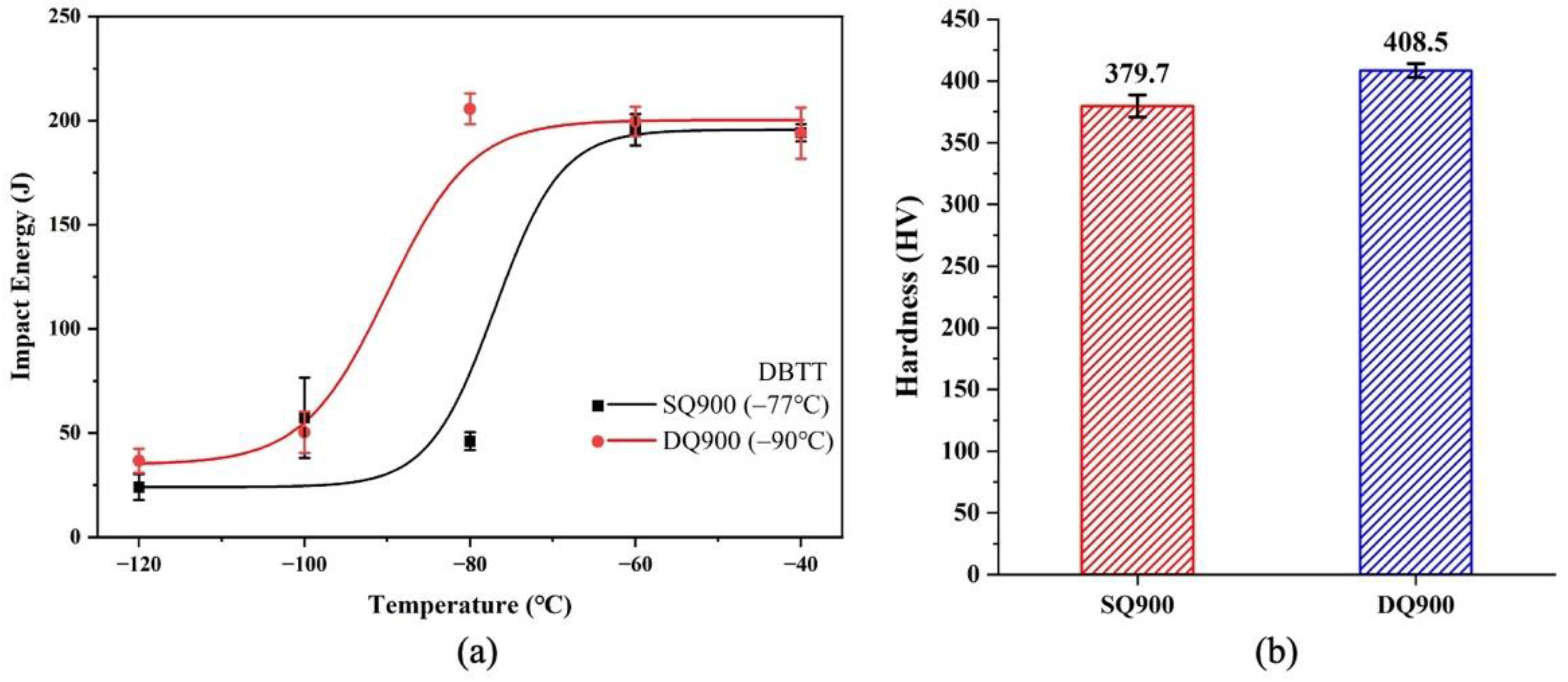
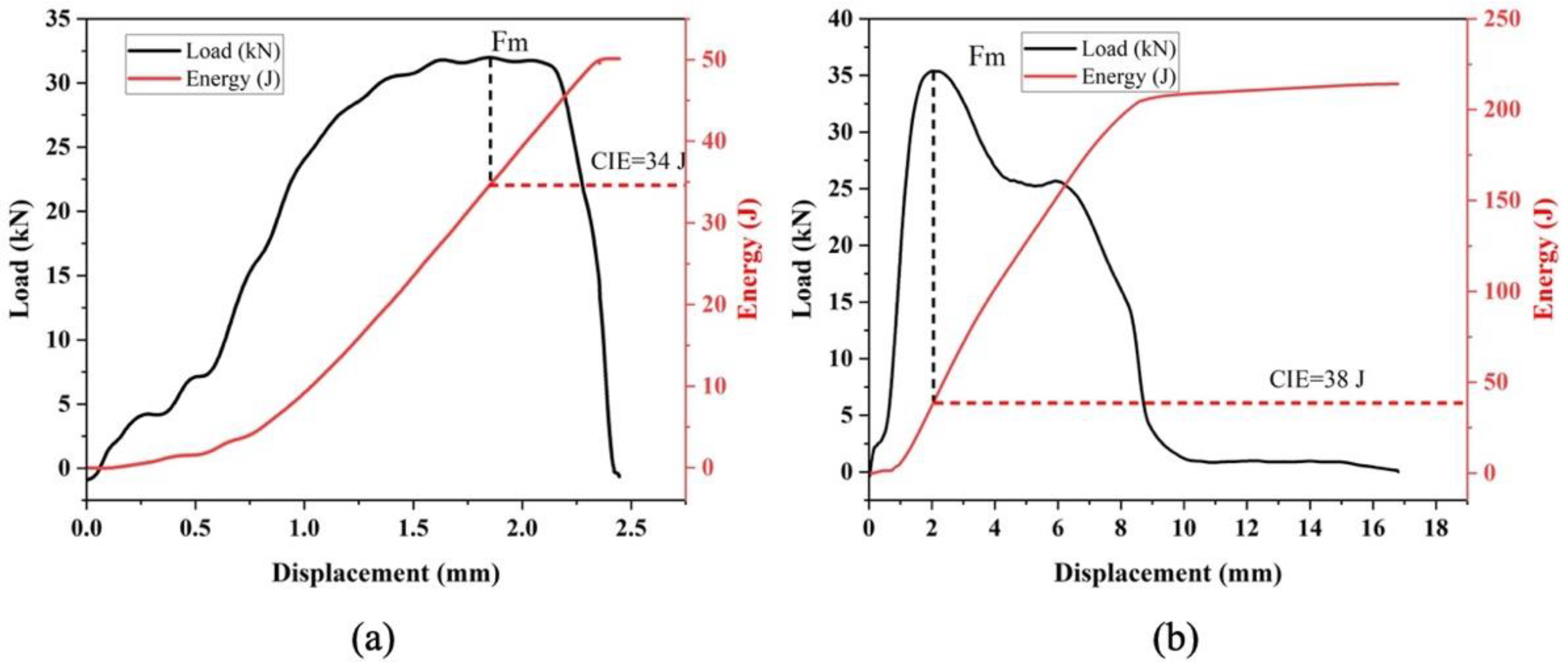
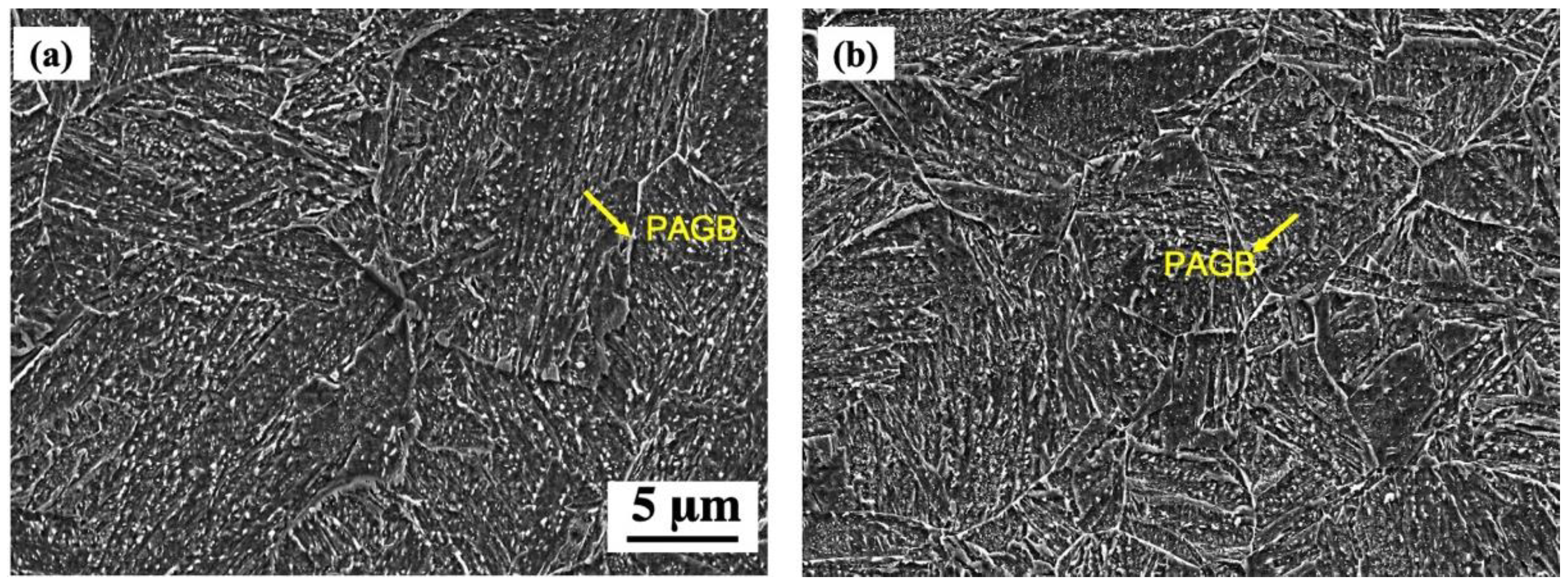
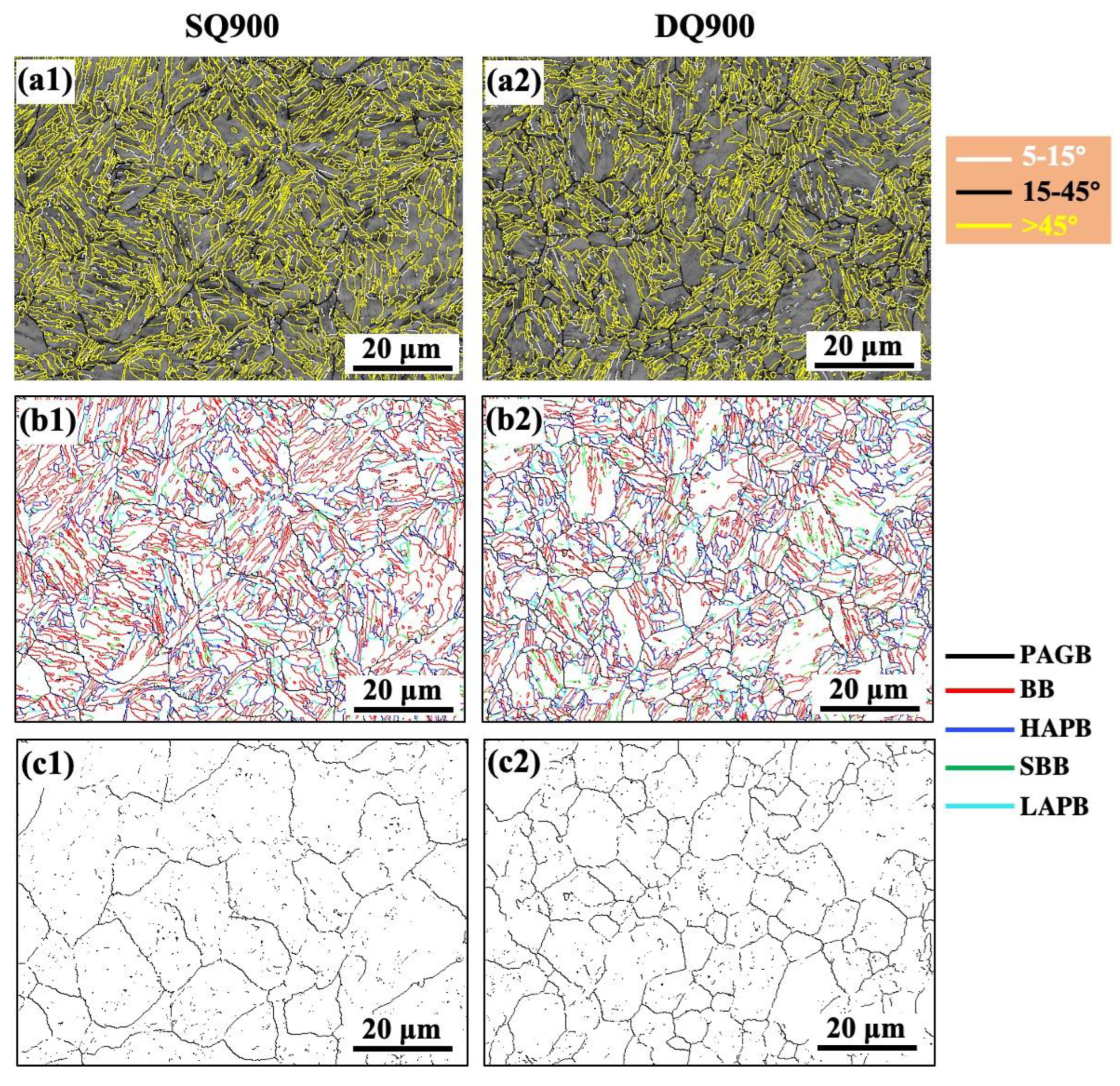
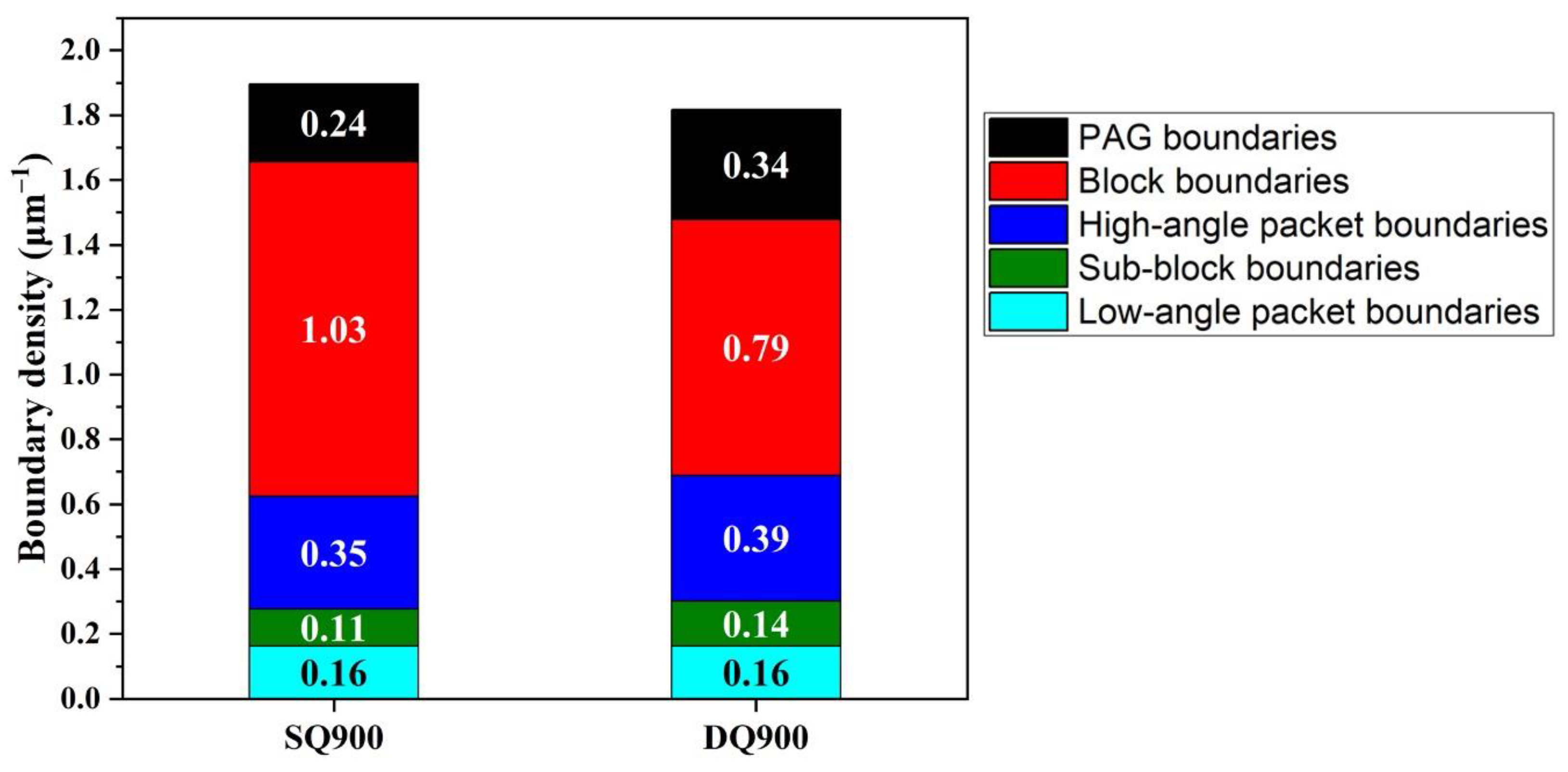
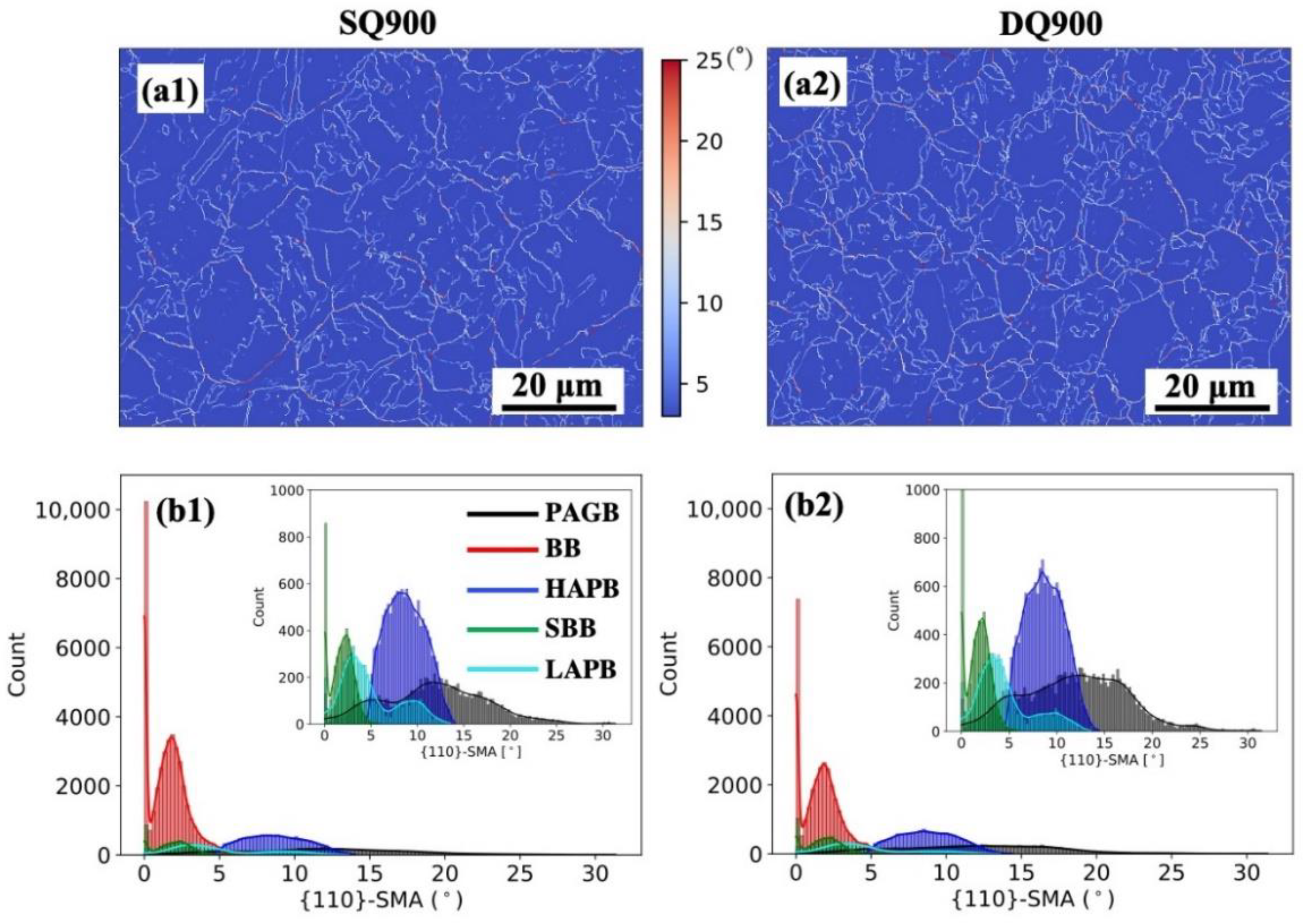
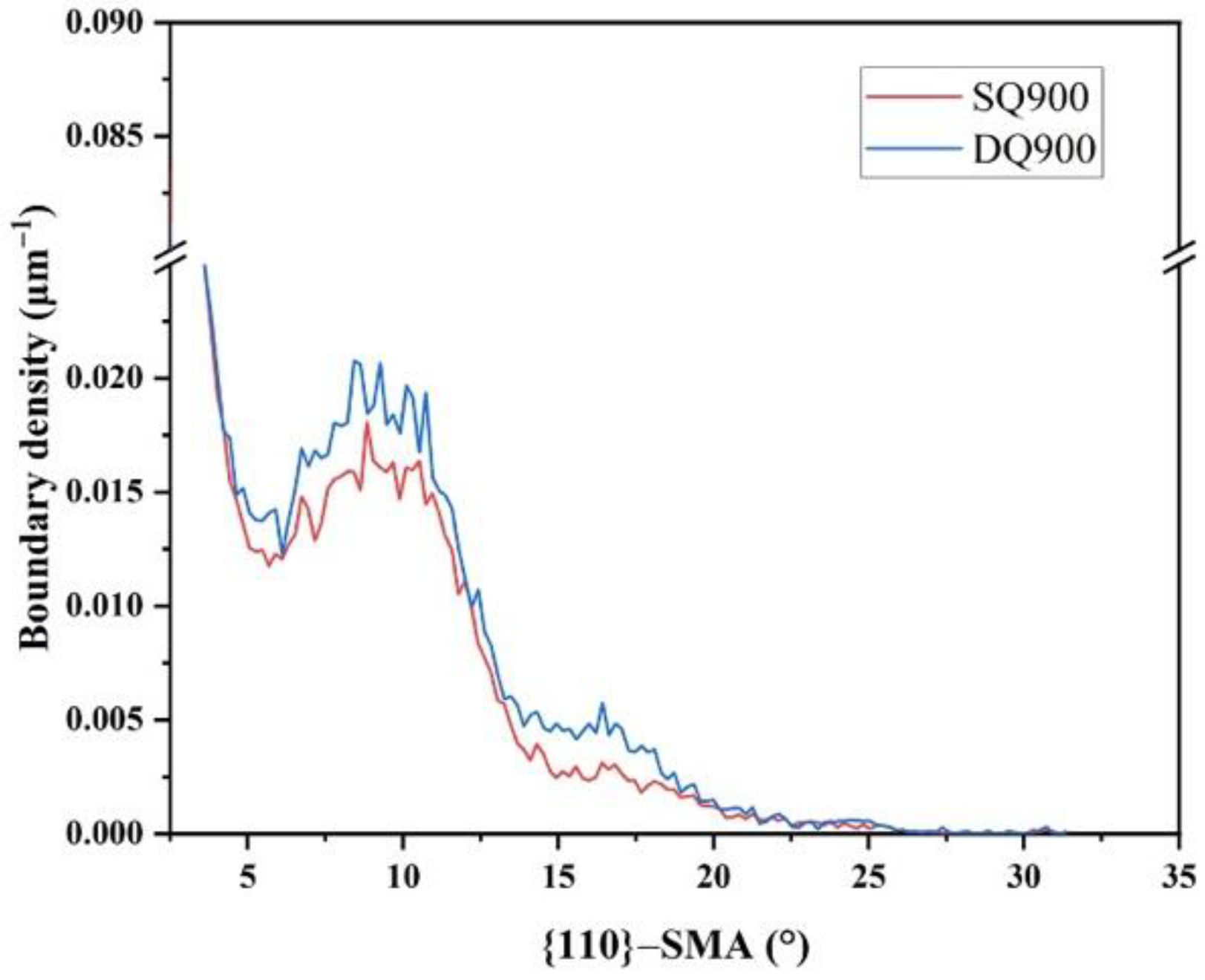
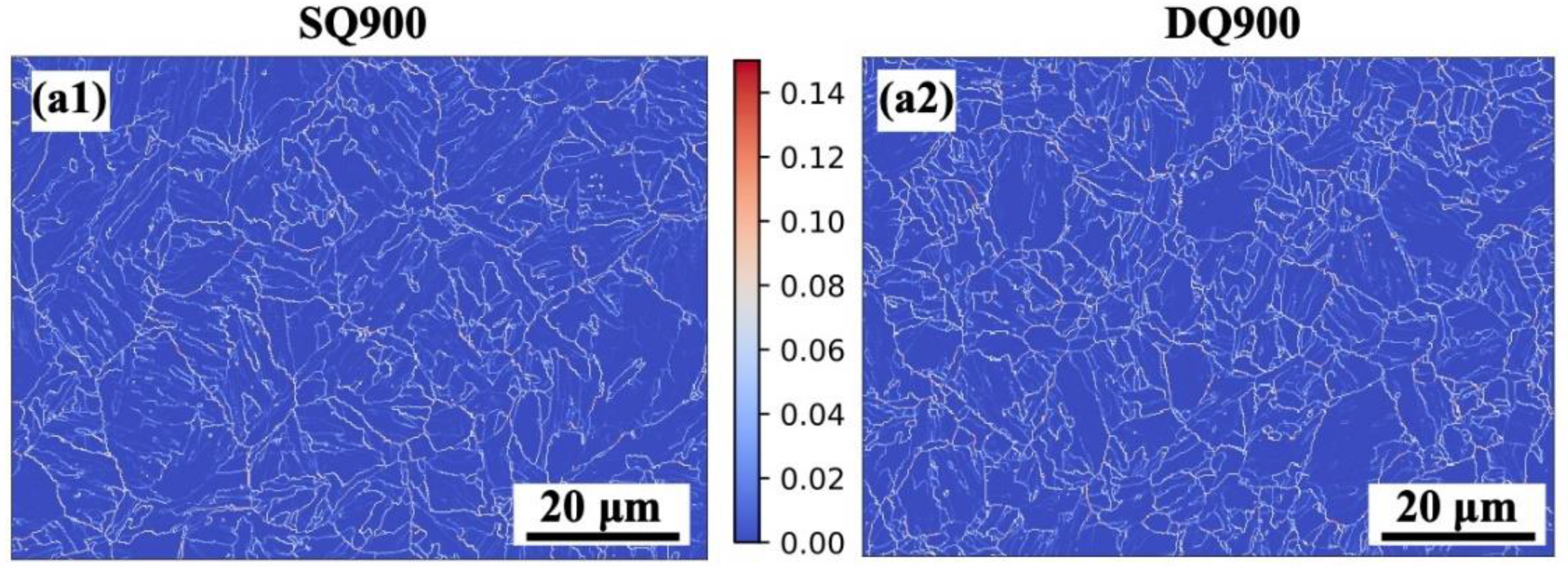
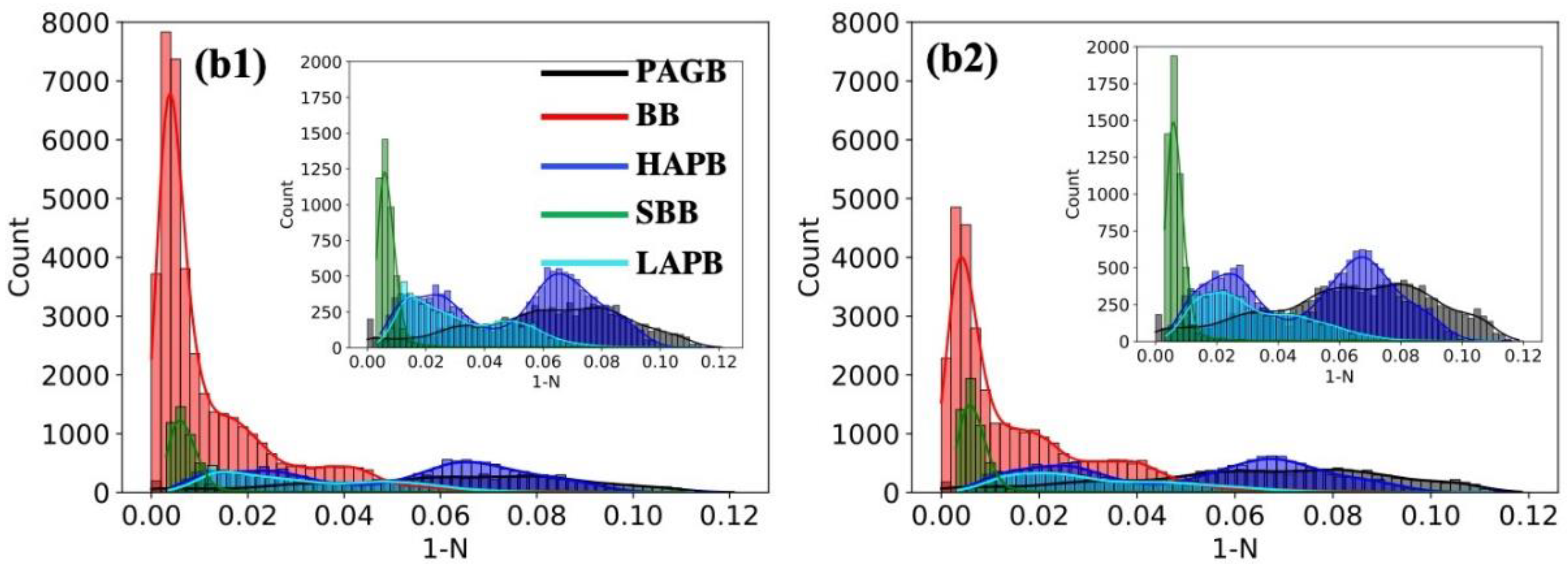
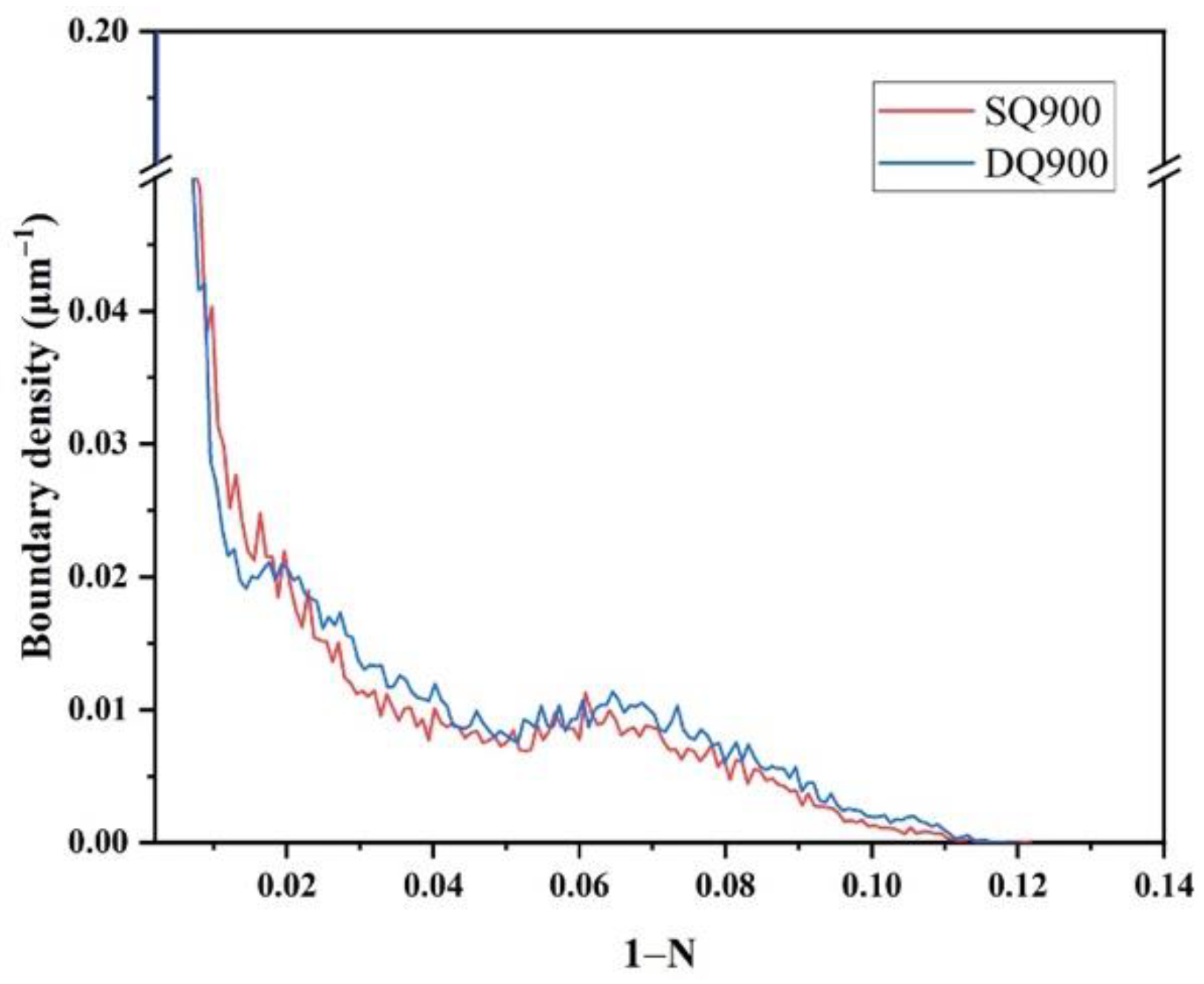
| Element | C | Si | Mn | Cr + Mo | Nb + Ti | B | Fe |
|---|---|---|---|---|---|---|---|
| mass% | ≤0.20 | ≤0.30 | ≤1.10 | 0.7–0.9 | ≤0.04 | ≤0.002 | Bal. |
Disclaimer/Publisher’s Note: The statements, opinions and data contained in all publications are solely those of the individual author(s) and contributor(s) and not of MDPI and/or the editor(s). MDPI and/or the editor(s) disclaim responsibility for any injury to people or property resulting from any ideas, methods, instructions or products referred to in the content. |
© 2022 by the authors. Licensee MDPI, Basel, Switzerland. This article is an open access article distributed under the terms and conditions of the Creative Commons Attribution (CC BY) license (https://creativecommons.org/licenses/by/4.0/).
Share and Cite
Wang, J.; Qian, R.; Huang, S.; Shang, C. Effect of Double-Quenching on the Hardness and Toughness of a Wear-Resistant Steel. Metals 2023, 13, 61. https://doi.org/10.3390/met13010061
Wang J, Qian R, Huang S, Shang C. Effect of Double-Quenching on the Hardness and Toughness of a Wear-Resistant Steel. Metals. 2023; 13(1):61. https://doi.org/10.3390/met13010061
Chicago/Turabian StyleWang, Jingliang, Rongtao Qian, Song Huang, and Chengjia Shang. 2023. "Effect of Double-Quenching on the Hardness and Toughness of a Wear-Resistant Steel" Metals 13, no. 1: 61. https://doi.org/10.3390/met13010061
APA StyleWang, J., Qian, R., Huang, S., & Shang, C. (2023). Effect of Double-Quenching on the Hardness and Toughness of a Wear-Resistant Steel. Metals, 13(1), 61. https://doi.org/10.3390/met13010061






